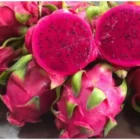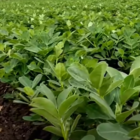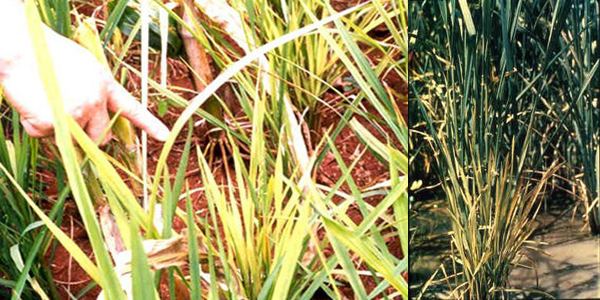
Grassy Stunt Disease of Rice: Symptoms, Disease Cycle, and Management
Grassy stunt disease of rice, also known as Rice Grassy Stunt Virus (RGSV), is a viral disease that affects rice crops, particularly in India. The disease is transmitted by the brown planthopper (BPH) vector, which feeds on infected plants and carries the virus to healthy ones.
Symptoms of the disease include severely stunted hills with excessive tillering, giving a grassy and rosette appearance. The leaves become short, narrow, and yellowish-green with numerous small rusty spots forming blotches.
Infected plants do not produce panicles and retain green coloration even after applying sufficient nitrogenous fertilizers. RGSV has filamentous particles and is a member of the Tenuiviruses with a genome consisting of four single-stranded RNA.
Instant Guide about Grassy Stunt Disease of Rice PDF:
Grassy Stunt Disease of Rice Symptoms:
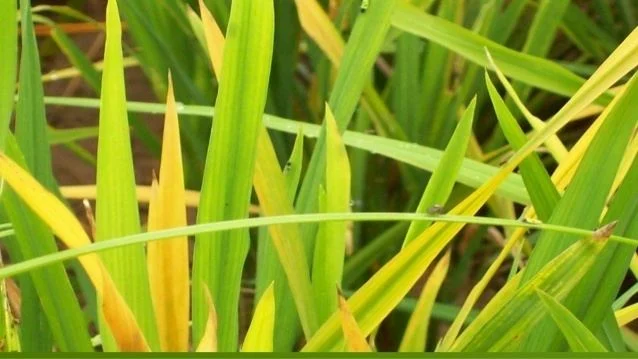
Rice crops affected by the grassy stunt disease exhibit several distinctive symptoms at various growth stages. The disease primarily impacts the plants during the vegetative growth phase, known as tillering, and its symptoms become evident around 10 to 20 days after infection.
- Severe Stunting: Diseased rice hills display significant stunting, characterized by a reduced overall plant height compared to healthy plants. This stunting is particularly pronounced in infected plants.
- Excessive Tillering: The affected rice hills show an unusually high number of tillers, resulting in a dense and grassy appearance. The excessive tillering contributes to the overcrowded and congested growth of the plants.
- Upright Growth Habit: The diseased plants exhibit a very upright growth habit, where the tillers grow in a vertical manner rather than spreading out horizontally as in healthy plants.
- Grassy and Rosette Appearance: The infected hills take on a grassy and rosette-like appearance, with the tillers closely packed together, giving the plant a bunchy look.
- Abnormal Leaf Characteristics: The leaves of the affected rice plants undergo noticeable changes. They become short, and narrow, and have a yellowish-green coloration, indicating a lack of proper nutrient uptake and photosynthesis.
- Rusty Spots and Blotches: Numerous small rusty spots or patches appear on the leaf surface, forming irregular blotches. These dark-brown or rust-colored spots are visible upon closer inspection and can sometimes cover the entire leaf area.
- Green Color Retention with Nitrogen Fertilizers: An unusual feature of the rice grassy stunt disease is that the leaves retain their green color even after the application of sufficient nitrogenous fertilizers. This indicates an inability of the plant to properly utilize the nutrients.
- Survival without Panicle Formation: Infected plants generally manage to survive until maturity, despite the disease’s impact on growth. However, they fail to produce panicles, the reproductive structures responsible for grain formation. This lack of panicle formation significantly reduces yields.
- Vulnerability Throughout Growth Stages: While the grassy stunt disease can affect rice crops at all growth stages, they are most vulnerable during the tillering phase. Seedlings infected during this stage rarely reach maturity, whereas plants infected at later stages may mature but fail to produce panicles.
Also Read: Bacterial Leaf Streak of Rice: Symptoms, Disease Cycle, Management
Rice Grassy Stunt Disease Cycle:
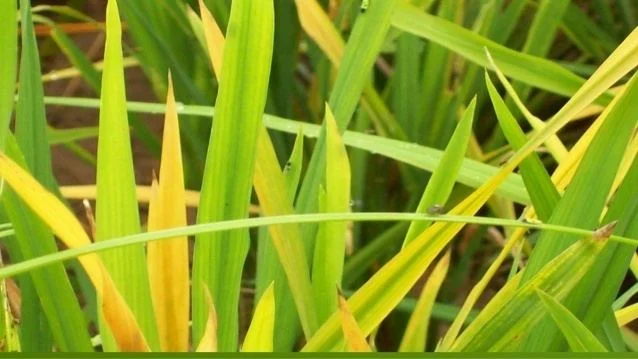
The rice grassy stunt disease (RGSV) is perpetuated through a complex cycle involving both the virus and the vector, the brown planthopper. Here’s a detailed explanation of the disease cycle:
- Virus Existence in Vector and Rice Crop:
- Rice grassy stunt virus (RGSV) exists within both the brown planthopper and the rice crop.
- The grassy stunt virus remains present in the vector as well as in the rice plants.
- Transmission by Brown Planthopper:
- Brown planthopper nymphs and adults act as vectors for the transmission of RGSV.
- The disease is transmitted in areas where rice cultivation is year-round.
- Prevalence of Macropterous Forms:
- The macropterous forms or the long-winged adults of the brown planthopper play a crucial role in spreading the disease.
- These long-winged adults are more significant carriers of the virus than the short-winged forms.
- Virus Acquisition and Feeding Period:
- The brown planthopper acquires the virus while feeding on infected rice plants.
- They need to feed on the diseased plant for at least 30 minutes to pick up the grassy stunt virus particles.
- Prolonged inoculation feeding periods, lasting up to 24 hours, result in higher infection rates.
- Virus Structure and Genome:
- Rice grassy stunt virus (RGSV) belongs to the Tenuiviruses family.
- The virus has fine filamentous particles with a diameter of 6-8 nm.
- The particles have a nodal contour length of 950-1,350 nm.
- It contains a single capsid protein, and its genome consists of four single-stranded RNA.
- Persistent Transmission by Brown Planthopper:
- The disease spreads in a persistent manner by the brown planthopper, Nilaparvata lugens.
- There is a latent period of 5 to 28 days in the vector after acquiring the virus.
- During this latent period, the brown planthopper remains asymptomatic but capable of transmitting the virus.
- Role of Ratoon Crop and Vector Presence:
- Ratoon crop (crop regrowth from the stubble of the previous crop) can perpetuate the disease from one crop to another.
- The presence of the brown planthopper vector in rice fields encourages the spread of the disease.
The rice grassy stunt disease cycle involves a delicate interplay between the virus, the brown planthopper vector, and the continuous presence of rice crops. Understanding this cycle is crucial for implementing effective management strategies to control the spread of the disease and protect rice yields in areas where the disease is endemic.
Also Read: False Smut of Rice: Symptoms, Impact, Disease Cycle and Management
Grassy Stunt Disease of Rice Management:
Izumonas-Best Fungicide for
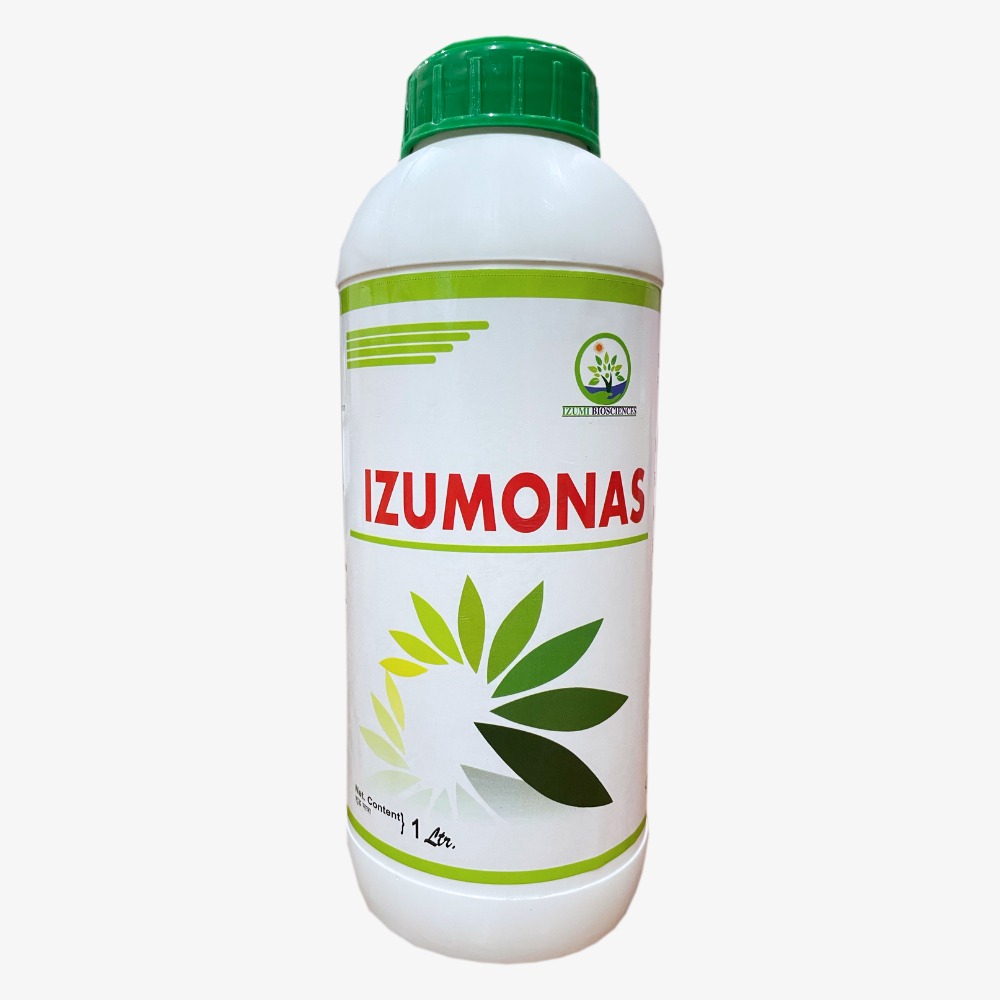
Izumonas (Bio Fungicides and Bactericides)
Contents: Pseudomonas Fluorescens
IZUMONAS is a biological product consisting of plant growth-promoting rhizobacteria (PGPR), which are naturally occurring bacteria found widely in nature. This unique product is designed to enhance plant defence mechanisms and promote healthy growth. IZUMONAS can be used on all types of crops without leaving any residue on the plants.
IZURaid- Best Fungicide
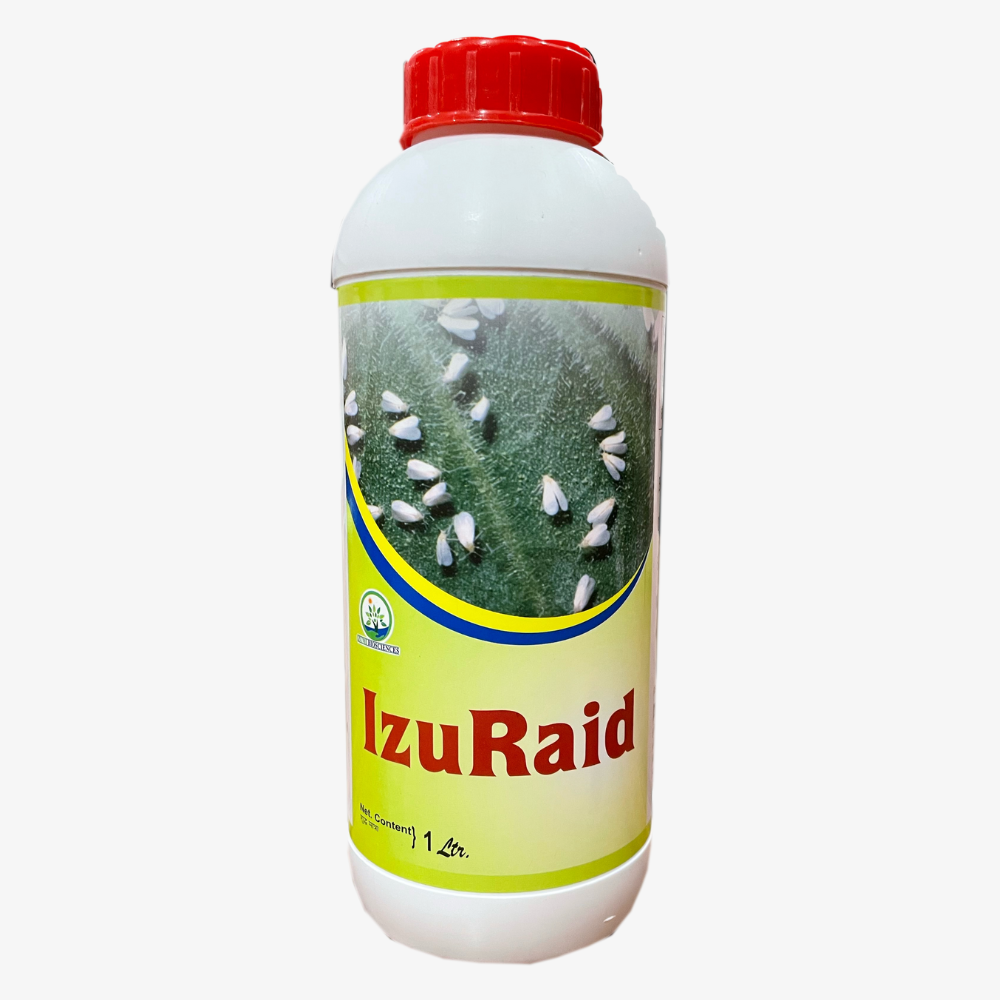
Izuraid (Bio Insecticides)
IZURaid stands as a remarkable Biotech research product designed to effectively control a wide range of insect pests through its unique mode of action. It functions as an anti-feeder and repellent, while also disrupting the life cycle of insects. This powerful combination makes it a highly efficient solution for managing and preventing insect infestations.
Contents:
Azadirachtin 0.03% w/w
Hydroxy EL 5.0% w/w
Epichlorohydrin 0.50%w/w
Aromax (MAX) 3.9% w/w
Balanced Neem Oil
Modes Of Use:
Seed Treatment: Mix 5-10 ml of IZUMONAS and IZURaid per kilogram of seeds in an adequate amount of water. Submerge the seeds in this solution and allow them to dry in a shaded area before sowing.
Seedling Treatment: Combine 100 ml of IZUMONAS and IZURaid per 20 litres of water. Dip the roots of the seedlings in this solution for approximately 30 minutes prior to transplanting.
Soil Application: Mix 500 ml of IZUMONAS and IZURaid with 30 kilograms of farmyard manure (FYM) or soil. Apply this mixture to one acre of land before ploughing or irrigation.
Foliar Application: Dilute 2-3 ml of IZUMONAS and IZURaid each in 1 litre of water. Use this solution to spray the entire foliage of the plants, ensuring complete coverage on both sides of the leaves. It is advisable to shake the bottle before use. For best results, spray early in the morning or evening. If a power sprayer is used, double the recommended dosage.
Also Read: Bakanae Disease of Rice: Symptoms, Disease Cycle, Management
If you have any queries or need information about our Bio products, feel free to contact us.

